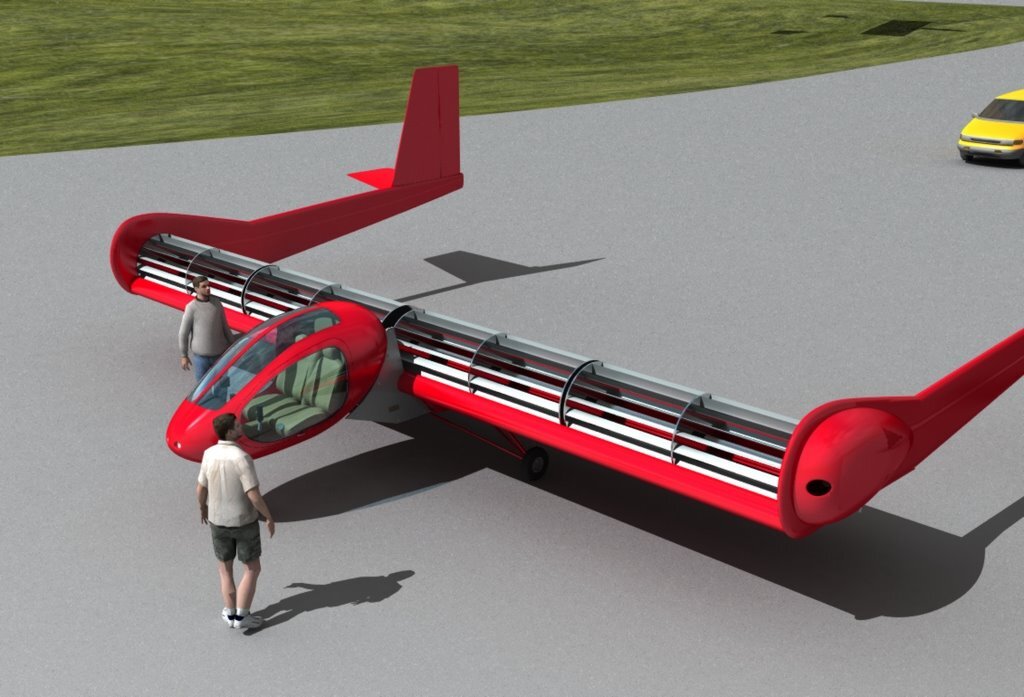With a traditional airplane, a propellor or jet engine pulls it forward, and lift is created as air subsequently flows over the wings. FanWing aircraft are a little different. They have a powered horizontal rotary fan along the leading edge of their single wing, which serves to pull air over it, creating lift without the need for speed. Britain’s FanWing company has been developing the technology since 1999, and has already had success with radio-controlled proof-of-concept models. This month, however, the company announced that it plans to debut a two-seater piloted FanWing aircraft at the 2013 EAA AirVenture air show in Oshkosh, Wisconsin.
First of all, why would anyone want to build an airplane this way?
According to the company, due to the fact that little in the way of speed is required to achieve lift, FanWings can take off and land on very short runways. They are also said to be inexpensive and simple to build, maintain and control; are stable and resistant to turbulence; they won’t stall at low speeds; and, they’re quiet. Should their engine conk out, their glide ratio is reportedly rather low, although they are still capable of performing an auto-rotational landing.
The piloted aircraft is planned to have a rotor measuring 32 feet (10 meters) long by 30 inches (75 cm) wide, with a total body span (including its twin tails) of 46 feet (14 meters). It will weigh 770 pounds (350 kg) empty, and have a maximum take-off weight of 1,300 pounds (600 kg). Its flight speed will be 20 to 70 knots (23 to 80.5 mph), and it should be able to take off within a distance of 50 feet (15 meters). Power will be supplied by a four-stroke Rotax 912 light aircraft motor.

The FanWing concept was first conceived by American inventor Patrick Peebles, who now heads the company. He is developing the piloted aircraft with a number of collaborators, including former BAE Systems Principal Concepts Engineer GeorgeSeyfang.
A small-scale static wind tunnel model has already been built and tested, with construction of the flying prototype scheduled to take place from August to November, followed by the first test flights beginning next February. This is definitely one we’ll be watching.














